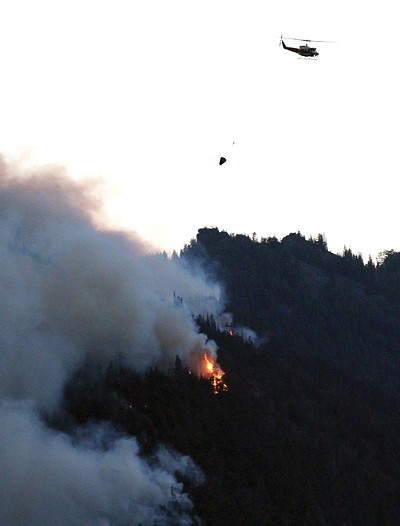Could the Roaring Lion Fire have been prevented?
Posted: August 18, 2016Source: Missoula Independent
Ron Porter likens the devastation wrought by the Roaring Lion Fire to “losing a friend you’ve had for 70 years.” That’s how long he’s lived in the shadow of Ward Mountain south of Hamilton, and almost how long he’s worked at his family’s Porterbilt Post & Pole. The fire that has so far claimed 16 homes and more than 8,200 acres of the Bitterroot National Forest is particularly unfortunate, Porter says, in light of all the work done by a group of locals to prevent this exact situation.
“You can’t believe how many people spent hundreds and hundreds of hours and effort trying to put this package together to benefit that area,” he says. “It’s sad.”
Porter sits on the citizen-based Bitterroot Forest Restoration Committee, or BRC, that first identified the corridor between Roaring Lion and Camas creeks as in dire need of fuel reduction four years ago. The committee’s proposal was picked up in late 2014 by the U.S. Forest Service, which expanded it to create the recently approved Westside Collaborative Vegetation Management Project. Prior to the outbreak of the Roaring Lion Fire, the Bitterroot had hoped to commence some of the noncommercial work before the summer’s end. Now, according to Darby/Sula District Ranger Eric Winthers, it’s likely the Forest Service will have to take some time to investigate any changes to the project necessitated by the fire.
“Our objectives have kind of changed now,” Winthers says, “so we’ll have to reassess and reanalyze some aspects of it.”
The Westside project had already created a fair amount of controversy over the past year. But with the Roaring Lion Fire, that controversy quickly morphed into a string of accusations online and in the media. Some blamed the Forest Service for prolonging the thinning proposed by the BRC by adding a swath of commercial timber harvest units south of Camas Creek to Lost Horse Canyon. Others alleged the project’s critics had stalled vegetation treatments in the burn area, pointing to a lawsuit that was actually filed days before the fire began.

PHOTO BY JOE WESTON
The Roaring Lion Fire has claimed 16 homes and consumed more than 8,200 acres of forest since July 31. It also generated a flurry of accusations relating to a controversial logging proposal in thearea.
“The fire would have happened anyway,” Winthers says. “We could have been working on the noncommercial thinning units above Judd Hollow, but whether that would have stopped the fire or not is anybody’s guess. We certainly probably would not have been able to implement the extent of harvest that would have been needed to stop the fire.”
BRC chair Wayne Hedman feels it’s a “tragedy” that the Roaring Lion Fire flared up before the Westside project could commence. However, he doesn’t fault anyone for how things played out. The committee’s recommendation may have been limited to the northern portion of the final project, he says, but he guesses the Forest Service’s inclusion of commercial units to the south were necessary to finance the work. And while he argues the allegations made by nearby residents regarding a lack of collaboration by the agency are “bunk,” he believes their objections had little impact on the proposal’s timeline.
“The project was not delayed because of litigation,” Hedman says. “The project was delayed because it’s just the nature of the beast. Only so much work can get done by the Forest Service at a given time, and they had other projects they’d been working on.”
BRC member and retired Forest Service civil engineer Kirk Thompson concurs. The review process takes a couple years at best, he says, particularly for large proposals such as the Westside. It was “pretty obvious” that the treatment area proposed by the committee “wasn’t going to pay for itself,” Thompson says, hence the agency’s need to expand the size and scope of the project. And the only way a lawsuit could have delayed the project, he adds, is if a federal judge had granted an injunction. To date, that has not happened.
“I was disappointed that we couldn’t have gotten the work done before the fire to see whether it had any effect at all or not,” Thompson says. “We don’t know whether it would have had any real effect on the fire and how it was burned, how it was fought.”
Even after leaving the agency in the early 1990s, Thompson says he was active in promoting more fuels reduction treatment along the west side of the Bitterroot Valley. Homes were popping up throughout the wildland urban interface there, and he recalls the buildup of downed timber on the forest giving rise to a local adage.
“We were all saying, ‘It’s not a matter of is it going to burn, it’s only a matter of when,'” Thompson says. “It just so happened the when happened right now.”
